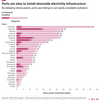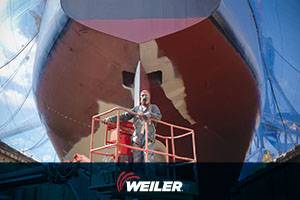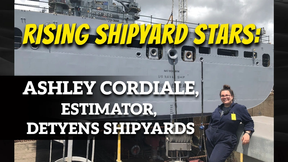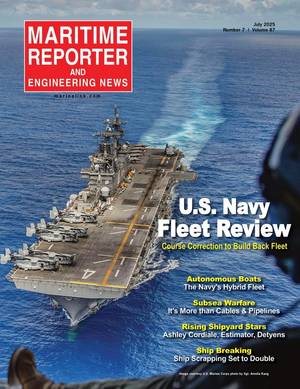Bulk Carrier Grounded Due to Inadequate Clearance Guidance
Inadequate operating company guidance on underkeel clearance led to the April 2023 grounding of a bulk carrier in Lake Huron, the National Transportation Safety Board (NTSB) said Tuesday.
The 667-foot-long, self-unloading bulk carrier John J Boland—owned by American Steamship Company and operated by Grand River Navigation under charter—grounded twice as it was completing final loading in Port Dolomite, Michigan on April 21, 2023. The crew discovered flooding and damage to the hull after it was underway. The vessel sustained over $775,000 in damage.
The crew planned to load a total of 30,000 tons of three types of aggregate stone. The first mate created a load plan based on past load plans, the ship’s loading and stability software and the operating company’s draft guidance spreadsheet. The load plan required the drafts of the John J Boland be no greater than 26 feet 8 inches. The first mate believed the operating company’s draft guidance included a safety factor that would provide additional underkeel clearance between the vessel and the shoal, or shallow water, but the draft guidance did not include a safety factor. The operating company’s safety management system also did not provide guidance for creating load plans related to minimum underkeel clearances to be maintained during loading operations. The NTSB determined the operating company’s guidance was inadequate for creating a load plan with sufficient underkeel clearance.
“To safely carry out cargo loading operations, it is important for vessel crews to understand the characteristics of the facilities where they will be operating, including the depth of water at the dock and potential hazards, such as nearby shoaling, that could impact the loading process,” the report said. “Effective company policies and guidance for cargo loading include pertinent information, such as clearly identifying expectations for required underkeel clearance, to assist personnel developing load plans with identifying and mitigating hazards. Additionally, crewmembers can consult information from nautical charts and surveys, tidal and/or water gage information, ship-specific stability and loading information, and information from the dock/facility when developing a load plan.”
In addition to the inadequate company guidance, the NTSB also found the master’s decision to use the main engine to free the vessel after it grounded a second time also caused the hull damage. To free the vessel after it first grounded, the crew used mooring lines to move it ahead. After it was free, the crew continued to load the vessel, which likely placed the vessel harder onto the shoal. The master used the vessel’s main engine to free it and back off the dock after the second grounding because the vessel was ready to depart. The vessel’s hull would have scraped along the bottom as the master backed the vessel off the dock.













